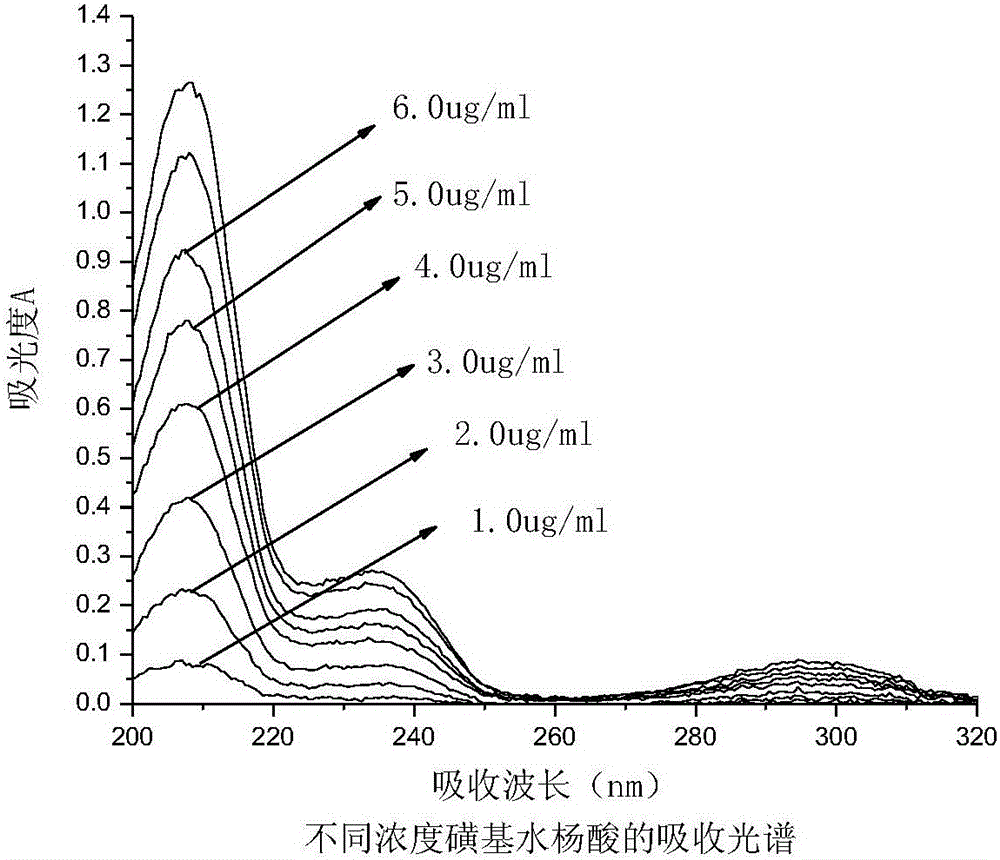Molecular imprinting and preparation method thereof
A molecular imprinting and template molecule technology, applied in the field of preparation of the molecular imprinting, can solve the problems of restricting the application of molecular imprinting technology, and achieve the effects of good application prospect, low production cost and process safety.
- Summary
- Abstract
- Description
- Claims
- Application Information
AI Technical Summary
Problems solved by technology
Method used
Image
Examples
Embodiment 1
[0031] This example concerns a set of molecular imprints and their preparation.
[0032] The preparation of molecular imprints uses the following steps:
[0033] a. At 25°C and 1 standard atmospheric pressure, add chitosan (CS) into 20mL of acetic acid solution with a mass content of 2%, stir well until completely dissolved, then add polyethylene glycol 6000 with a mass fraction of 3%. (PEG6000), stirring continuously for 30 minutes to make it evenly mixed, then adding pectin (PT) and template molecules, continuing to stir for 20 minutes, fully reacting to obtain a viscous solution;
[0034] b. Place the viscous solution obtained in step a on a watch glass until it reaches a flat surface, place it in a blast drying oven at 42±1°C to make it fully dry, and soak the dried polymer in deionized water for 12 hours. The template molecule is eluted to obtain a molecular imprint.
[0035] Molecular imprinting was prepared using the amounts of each substance (including PT, CS, PEG600...
Embodiment 2
[0039] This example relates to the verification of the adsorption performance of the molecular imprint of the present invention on template molecules.
[0040] In this embodiment, the adsorption performance to the template molecule is reflected by the adsorption amount Q, and the determination method of the Q value is:
[0041] Put the substance to be tested in the template molecule solution, and after reaching the adsorption equilibrium, use a centrifuge to separate the solution, take the supernatant, and measure the absorbance with an ultraviolet spectrophotometer, and calculate its concentration through the standard curve of the template molecule, namely C1, according to The molecular weight M of the template molecule, and the adsorption amount Q are calculated by the following formula.
[0042] Q = ( C 0 - C 1 ...
Embodiment 21
[0052] This example relates to the effect of the dosage ratio of chitosan and pectin on the molecular properties of molecularly imprinted adsorption templates. Detect the adsorption amount Q of molecular imprinted 5-sulfosalicylic acid obtained in Examples 1.1 to 1.3, as shown in the following table:
[0053]
[0054] Example 1.1(0) in Example 2.1.1 in the table represents the molecularly imprinted material of Example 1.1, that is, the material, amount of material and preparation method are basically the same as those in Example 1.1, the only difference is that no template is added during the preparation process Molecule 5-sulfosalicylic acid; the selection factor a is the ratio of the adsorption capacity of Example 1.1 and Example 1.1 (0), and is used to characterize the selective adsorption performance. Similarly, Examples 1.2(0) and 1.3(0) respectively represent the materials of Examples 1.2 and 1.3.
[0055] It can be seen from the results in the above table that the m...
PUM
 Login to View More
Login to View More Abstract
Description
Claims
Application Information
 Login to View More
Login to View More - R&D Engineer
- R&D Manager
- IP Professional
- Industry Leading Data Capabilities
- Powerful AI technology
- Patent DNA Extraction
Browse by: Latest US Patents, China's latest patents, Technical Efficacy Thesaurus, Application Domain, Technology Topic, Popular Technical Reports.
© 2024 PatSnap. All rights reserved.Legal|Privacy policy|Modern Slavery Act Transparency Statement|Sitemap|About US| Contact US: help@patsnap.com










